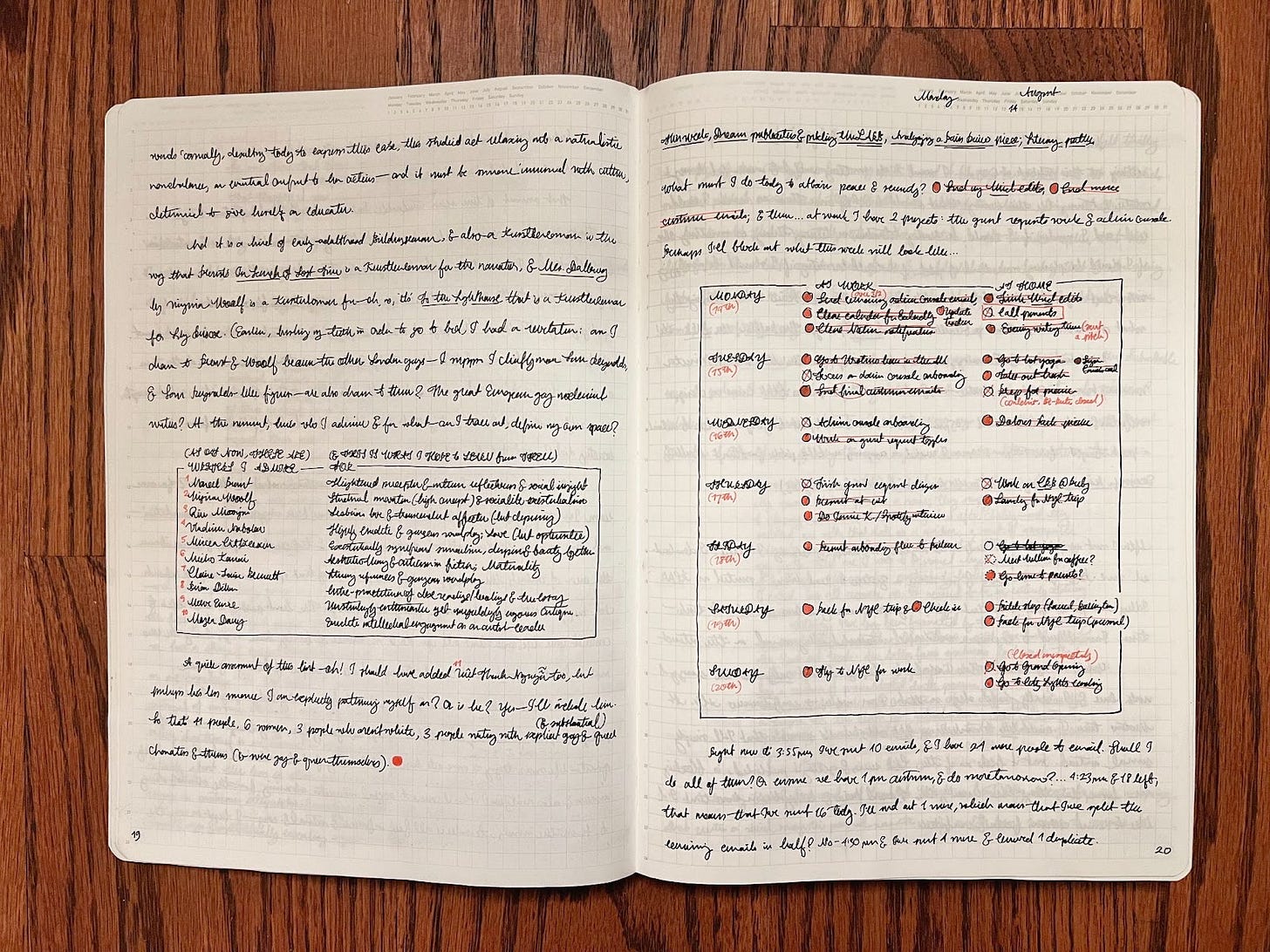⬜ Time-less Japanese notebooks
A planner without the terror
Celine Nguyen: “Avoid haphazard writing materials,” the German cultural critic and theorist Walter Benjamin wrote in his 1928 book One-Way Street. “A pedantic adherence to certain papers, pens, inks is beneficial.” In my early twenties I ignored Benjamin and was decidedly commitment-phobic: I switched between brands and I never finished a notebook. Devotion was easy, however, once I met the right notebook.
The object of my affection is the Japanese-made Stalogy notebook. I’m on my eighth in two years, all B5 sized with black covers. There are 4 other sizes, and 3 limited-edition colors released every year, which are always beguiling. I’m biased, but I think Stalogy gets closer to the cultural zeitgeist than Pantone. In 2023, the colors were scarlet salvia (a bright red that was everywhere in women’s fashion, too), forest, and fog. 2022? Leaf green, cream, and cappuccino beige: a cottagecore palette.
But I’m partial to Stalogy’s seasonless black notebooks. Black, as Yohji Yamamoto suggested, is modest, arrogant, lazy, easy. It also helps the embossed gold text on the covers stand out: discreetly placed near the spine are the words Stationery, Standard & Technology (where the name Stalogy comes from) and the elliptical aphorism What Should Have Been, Is. It’s a saying that invites a feeling of centeredness and ease. This present moment, this life, is the only one available to us. We might as well make the most of it, and the most out of our journaling.
I have a certain reverence for the ritual of writing in my notebook: always the same fountain pen, the same permanent black ink. But I’m not really precious about the physical object itself. Small, functional details make the notebooks easy to carry around and use extensively: a lightweight and durable soft cover, a thread-stitched spine that lays flat, rounded outer edges to avoid creased corners. The pages are made of what’s colloquially known as “Bible paper”: exceptionally thin, smooth, and durable, favored for dictionaries, religious texts, and dense literary anthologies.
Psychologically, the notebooks get at the intent of a planner, without the terror. I’ve used the internet’s reigning favorite Japanese planner, the Hobonichi Techo, but the preprinted dates on each page induced a certain anxiety whenever I skipped a day. It felt like a flagrant waste of paper, and the accumulating guilt meant that, after a few weeks of desultory use, I abandoned the notebook. The Stalogy approach is more soothing. Pages are undated, but the 365Days notebooks have the months and days printed at the top of each page. You can date your entries by circling January, Wednesday, and 10.
Or don’t date them. Let time pass without observation or ceremony. Fill the pages with to-do lists or the content of your consciousness. Virginia Woolf, who filled out one journal a year from 33 until her death, saw them as containing the “loose, drifting material of life…anything solemn, slight, or beautiful.”
I bought my last notebook at the venerable Choosing Keeping in London, which presents all their products — luminous, pure Gansai Tambi watercolors, hand-turned tortoiseshell celluloid fountain pens, and pointlessly beautiful floral wrapping paper — with a certain decorous grandeur. NYC residents can stop by Yoseka Stationery in Greenpoint or Goods for the Study in Manhattan. And there’s always buying online from Jetpens, which makes all stationery readily accessible, at the cost of stripping away some of its analog allure.
Celine Nguyen is a designer and writer in San Francisco. She writes weekly essays on literature and culture on her Substack, personal canon.



Beautifully sold - have just bought one. Just wondering which fountain pen you use?
Such good taste in paper! I'm similar but my devotion is to the Muji flat lay notebook. A budget option, but 100% reliable.